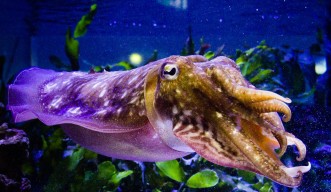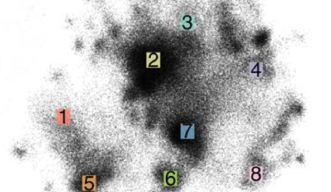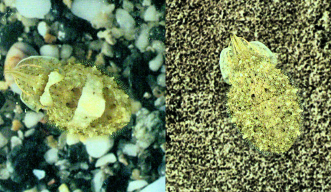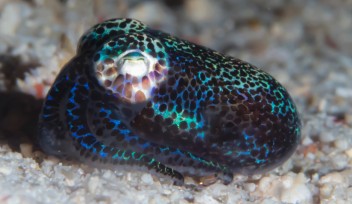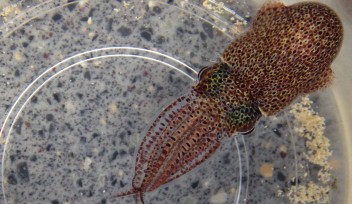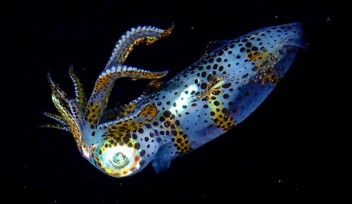Cuttlefish camouflage: more than meets the eye
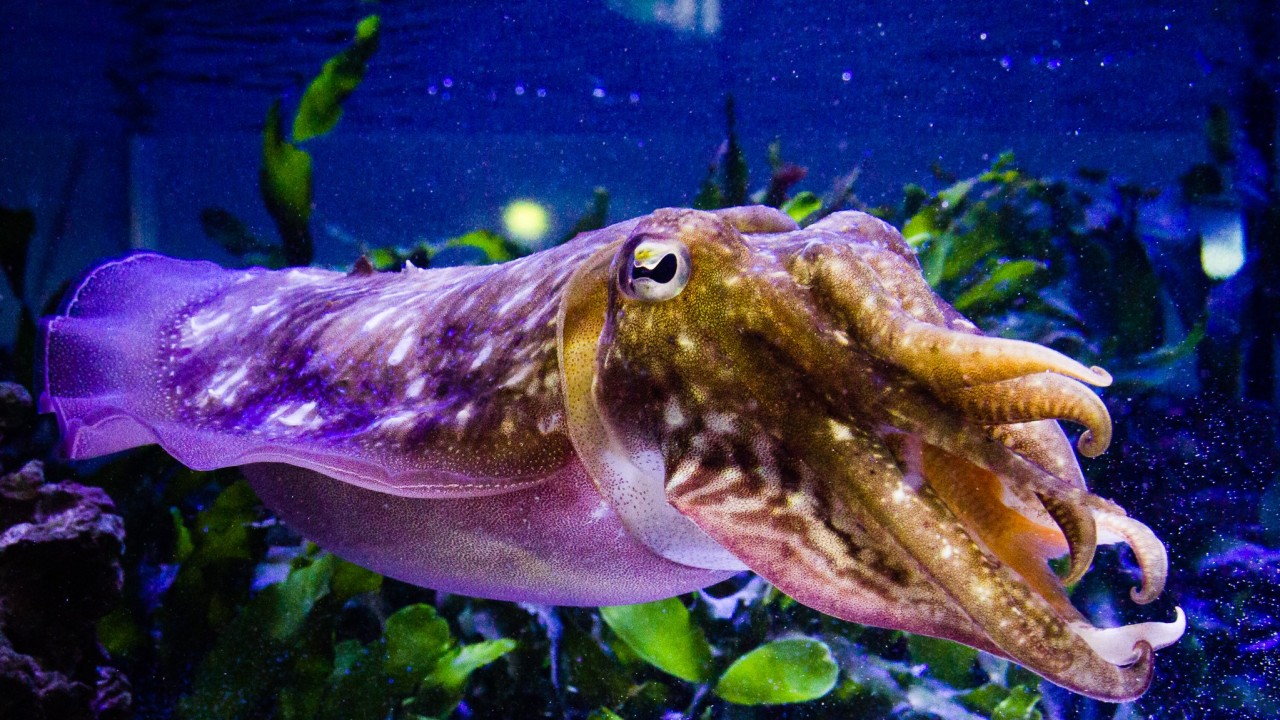
Cuttlefish, along with other cephalopods like octopus and squid, are masters of disguise, changing their skin color and texture to blend in with their underwater surroundings.
Now, in a study published 28 June in Nature, researchers at the Okinawa Institute of Science and Technology (OIST) and the Max Planck Institute for Brain Research have shown that the way cuttlefish generate their camouflage pattern is much more complex than previously believed.
Cuttlefish create their dazzling skin patterns by precisely controlling millions of tiny skin pigment cells, called chromatophores. Each chromatophore is surrounded by a set of muscles, which contract and relax under direct control of neurons in the brain. When the muscles contract, the pigment cell is expanded and when they relax, the pigment cell is hidden. Together, the chromatophores act like cellular pixels to generate the overall skin pattern.
Professor Sam Reiter, who leads the Computational Neuroethology Unit at OIST said: “Prior research suggested that cuttlefish only had a limited selection of pattern components that they would use to achieve the best match against the environment. But our latest research has shown that their camouflaging response is much more complicated and flexible – we just hadn’t been able to detect it as previous approaches were not as detailed or quantitative.”
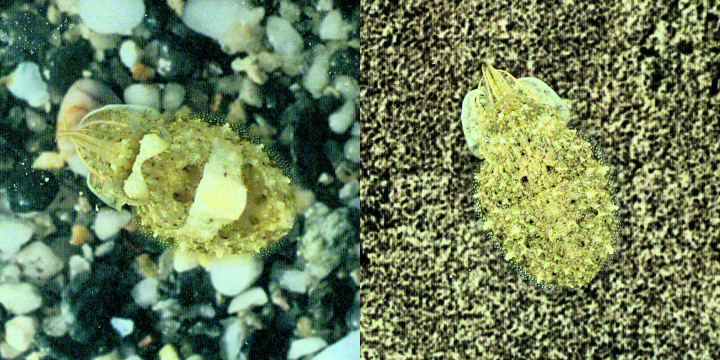
To make their discovery, the team used an array of ultra high-resolution cameras to zoom into the skin of the common European cuttlefish, Sepia officinalis. The scientists presented the cuttlefish with a range of different backgrounds. As the cuttlefish transitioned between camouflage patterns, the cameras captured the real-time expansion and contraction of tens to hundreds of thousands of chromatophores.
Data from around 200,000 skin pattern images were then crunched by the supercomputer at OIST and analyzed by a type of artificial intelligence, known as a neural network. The neural network looked holistically at the different elements of the skin pattern images, including roughness, brightness, structure, shape, contrast, and more complex image features. Each pattern was then placed into a specific location in ‘skin pattern space’, a term the scientists coined to describe the full spectrum of skin patterns generated by the cuttlefish.
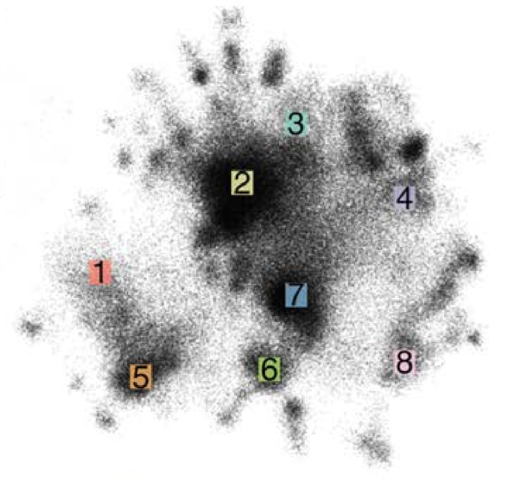
The researchers also used the same process to analyze images of the background environment, and looked at how well the skin patterns matched the environment.
Overall, the researchers found that the cuttlefish were able to display a rich variety of skin patterns and could sensitively and flexibly change their skin pattern to match both natural and artificial backgrounds. When the same animal was presented with the same background multiple times, the resulting skin patterns subtly differed in ways that were indistinguishable to the human eye.
The path that the cuttlefish took to reach each skin pattern was indirect. The cuttlefish transitioned through a range of different skin patterns, pausing in between, with each pattern change improving the camouflage until the cuttlefish stabilized on a pattern they seemed satisfied with. Such paths, even between the same two backgrounds, were never the same, emphasizing the complexity of the cuttlefish’s behavior.
“The cuttlefish would often overshoot their target skin pattern, pause, and then come back,” said Theodosia Woo, joint first author of the study and graduate student in the Max Planck Institute for Brain Research team. “In other words, cuttlefish don’t simply detect the background and go straight to a set pattern, instead, it is likely that they continuously receive feedback about their skin pattern and use it to adjust their camouflage. Exactly how they receive that feedback – whether they use their eyes, or whether they have a sense of how contracted the muscles around each chromatophore are – we don’t yet know.”
The researchers also examined another skin pattern display, called blanching, which occurs when cuttlefish turn pale in response to a threat. “Unlike camouflaging, blanching was fast and direct, suggesting it uses a different and repeatable control system,” said Dr. Dominic Evans, a postdoctoral fellow in the Max Planck Institute for Brain Research team.
When the researchers took high resolution images of the blanching display, they realized that some elements of the previous camouflage pattern remained, with the blanching pattern superimposed on top. Afterwards, the cuttlefish would slowly but reliably return to displaying its pre-blanching skin pattern.
“This suggests that information about the initial camouflage somehow remains. The blanching is more like a response that temporarily overrides the camouflage signals from the brain and might be controlled by a completely different neural circuit in the brain,” explained Dr. Xitong Liang, joint first author of the study and former postdoctoral researcher in the Max Planck Institute for Brain Research team. “The next step is to capture neural recordings from cuttlefish brains, so we can further understand exactly how they control their unique and fascinating skin patterning abilities.”
Article Information
Specialties
Research Unit
For press enquiries:
Press Inquiry Form










